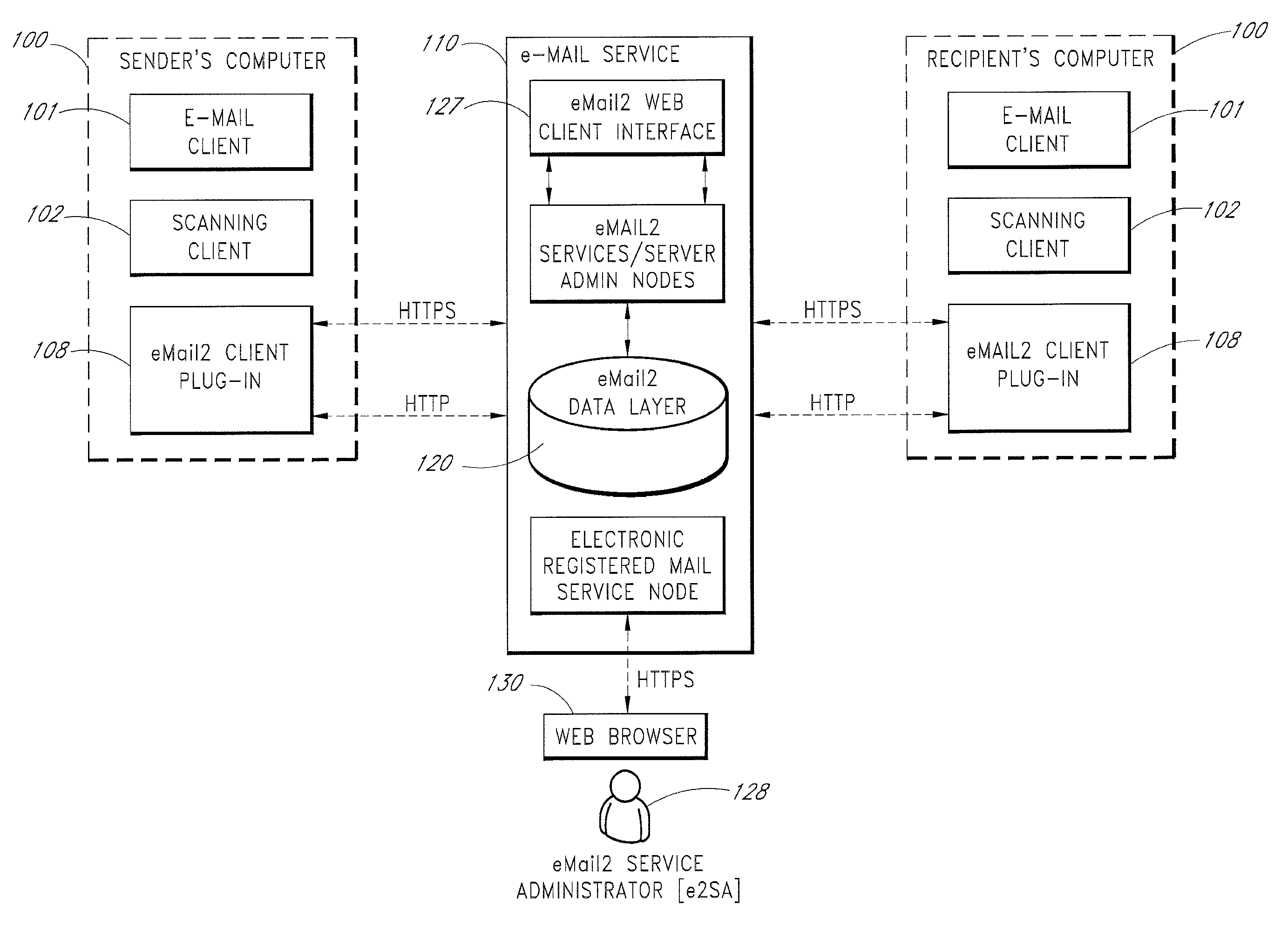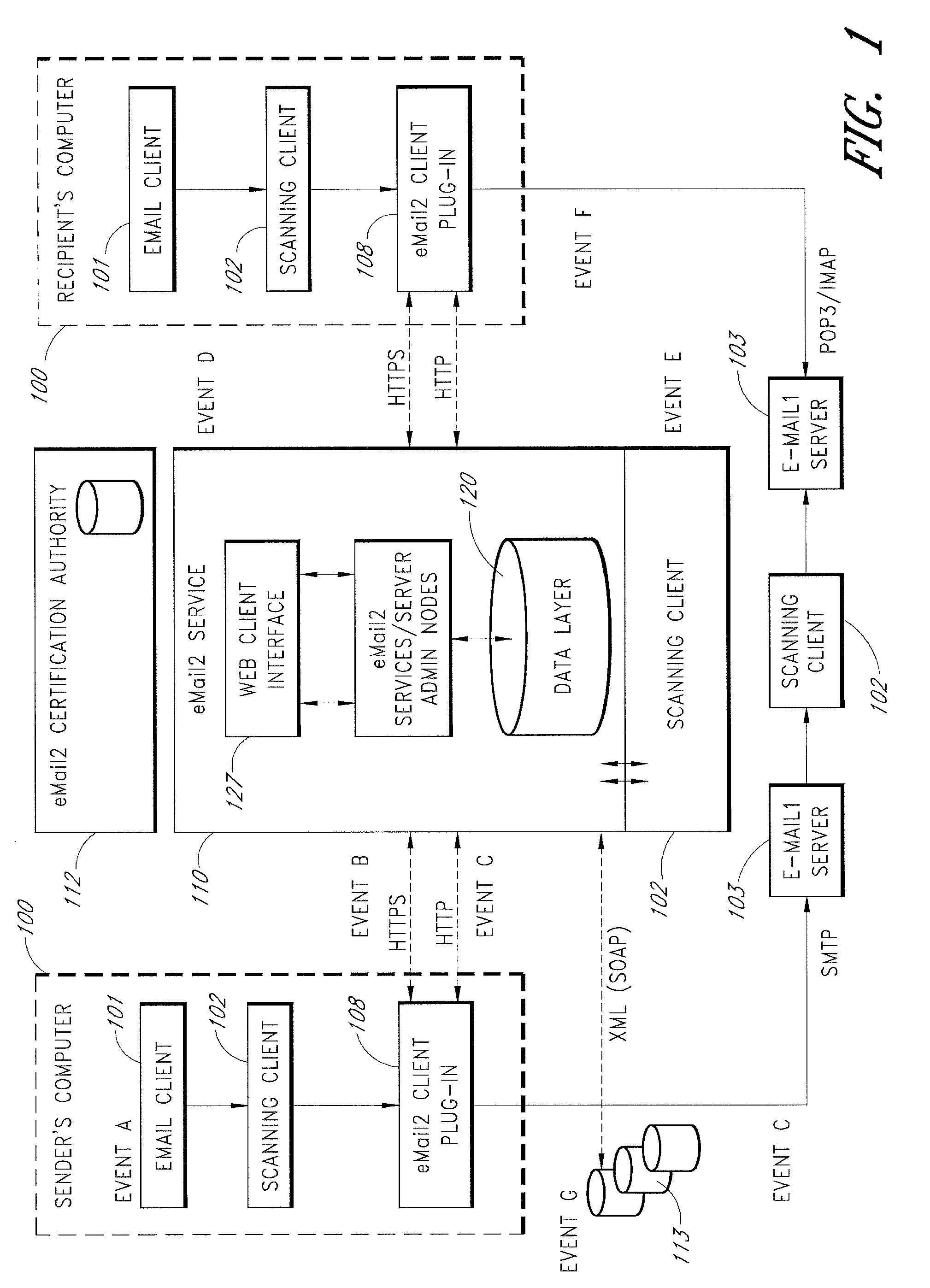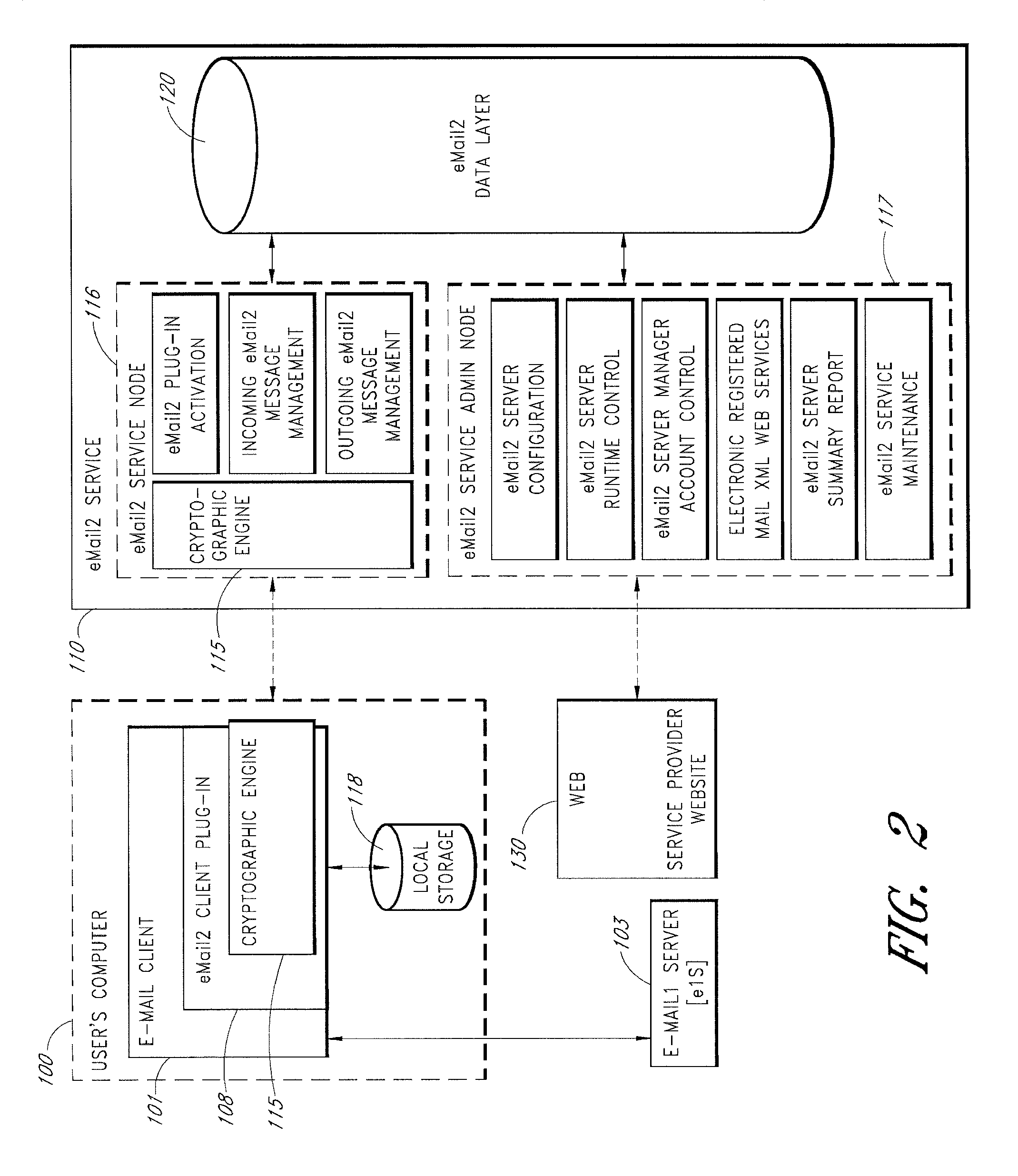Secure electronic mail system with thread/conversation opt out
a secure electronic mail system and thread technology, applied in the field of electronic mail systems, can solve the problems of multi-layer methods not being able the estimated global cost of $20 b, and the inability to stop the increase of spam e-mail and viruses, etc., to facilitate the viewing of e-mail messages
- Summary
- Abstract
- Description
- Claims
- Application Information
AI Technical Summary
Benefits of technology
Problems solved by technology
Method used
Image
Examples
Embodiment Construction
[0084]An e-mail messaging system (hereinafter “eMail2”) that allows users to securely send and track electronic messages will now be described with reference to the drawings. The eMail2 system allows any organization to create its own Private E-mail Network (PEN) and decide who belongs to it. The eMail2™ system is very secure, fully auditable, and trackable. eMail2 interoperates with existing e-mail network infrastructures and protocols (“e-mail1”), but adds extra layers of security and features. eMail2 is not necessarily a replacement for traditional e-mail, it is a comprehensive upgrade that plugs existing security holes and adds valuable layers of new features, all without inhibiting or constraining existing e-mail1 processes.
[0085]Embodiments of the eMail2 system may include various features, including but not limited to the following: (1) secure transfer of e-mail messages, without the need for users to replace existing e-mail clients or to change e-mail addresses; (2) tracking...
PUM
 Login to View More
Login to View More Abstract
Description
Claims
Application Information
 Login to View More
Login to View More - R&D
- Intellectual Property
- Life Sciences
- Materials
- Tech Scout
- Unparalleled Data Quality
- Higher Quality Content
- 60% Fewer Hallucinations
Browse by: Latest US Patents, China's latest patents, Technical Efficacy Thesaurus, Application Domain, Technology Topic, Popular Technical Reports.
© 2025 PatSnap. All rights reserved.Legal|Privacy policy|Modern Slavery Act Transparency Statement|Sitemap|About US| Contact US: help@patsnap.com



